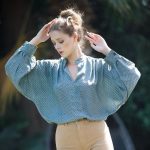Indian blouses are an essential part of traditional Indian attire, most commonly paired with a sari, a timeless garment that embodies elegance and grace. These versatile blouses, known locally as “choli,” serve not only as a fashion statement but also as a reflection of India’s rich cultural heritage. In this comprehensive guide, we will explore the history, styles, materials, aesthetics, and significance of Indian blouses, as well as tips for styling and caring for them. Whether you’re new to Indian fashion or looking to deepen your understanding, this article will provide you with valuable insights into this beautiful garment.
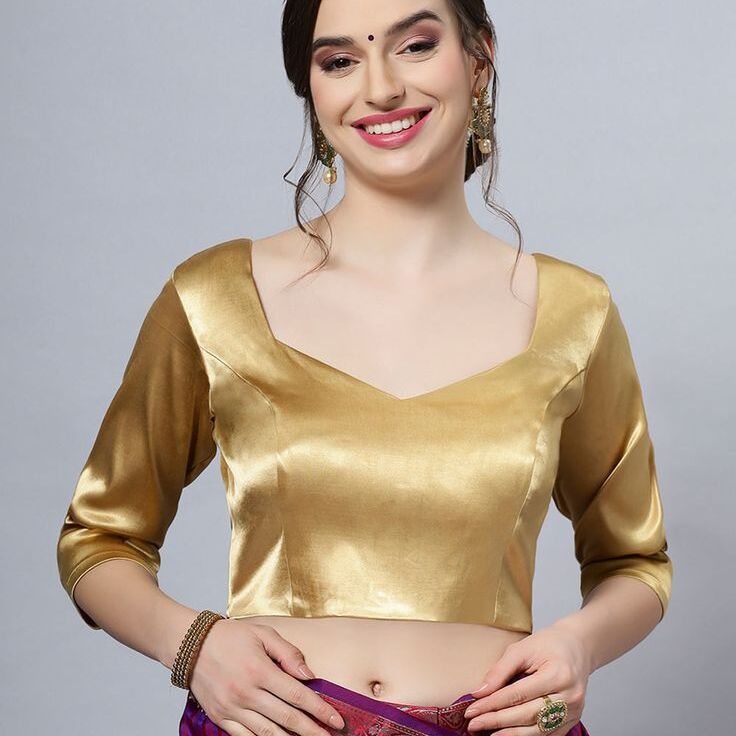
The Historical Background of Indian Blouses
The origins of Indian blouses can be traced back centuries, closely intertwined with the evolution of the sari. The sari, believed to have been worn since the Indus Valley Civilization, has long been a symbol of Indian culture. Traditionally, it comprises a long piece of fabric, typically around six to nine yards, draped elegantly around the body. To complement this timeless garment, women began wearing tightly-fitted blouses, leading to the creation of the choli.
Historically, the choli has undergone significant transformations in design and style. In ancient India, the choli was often simple and functional, with minimal embellishments. However, as trade and cultural exchanges flourished, especially during the Mughal era, the choli evolved into a more decorative piece, often adorned with intricate embroidery and embellishments.
In the modern era, Indian blouses have embraced a blend of traditional and contemporary styles. Designers experiment with silhouettes, cuts, and fabrics, resulting in diverse options for various occasions. Despite the evolution, the essence of the Indian blouse remains rooted in tradition, making it a cherished garment for women.
Styles of Indian Blouses
Indian blouses come in a multitude of styles, reflecting the diverse cultures and regions of India. Here are some popular styles:
Traditional Choli
The traditional choli is the foundational style of an Indian blouse. Typically, it features a round neck or square neck, short sleeves, and a fitted silhouette. Made from cotton or silk, traditional cholis focus on comfort and practicality while enhancing the sari’s overall look.
Crop Top Blouse
Crop top blouses have gained immense popularity in recent years, especially among younger generations. Designers create these blouses to be shorter, showcasing the midriff while providing a stylish twist on traditional attire. Fashion enthusiasts often pair crop tops with high-waisted saris or lehengas for a contemporary look.
Longer Blouse
The longer blouse style extends the hemline below the waist, offering additional coverage and a modern silhouette. These blouses often feature side slits or asymmetrical hemlines, providing both elegance and flair. Long blouses are particularly well-suited for formal occasions.
Off-the-Shoulder Blouse
The off-the-shoulder blouse is a trendy variant that exposes the shoulders and collarbones, adding a touch of allure to the outfit. This style can be both playful and elegant, making it perfect for weddings, parties, or festive celebrations.
Halter Neck Blouse
Halter neck blouses have a unique design that straps around the neck, leaving the shoulders bare. This style can be paired with saris for a chic and trendy look. The halter neck silhouette adds a modern touch to traditional attire, making it popular for special occasions.
Backless Blouse
The backless blouse is a daring choice that showcases the back, making it a favorite for women who want to make a bold statement. You can adorn this style with intricate designs or lace, which beautifully complements the sari and adds an element of surprise to an otherwise traditional look. traditional outfit.
Designer Blouses
In contemporary fashion, several Indian designers create blouses that reflect modern trends while honoring traditional craftsmanship. These designer blouses often feature unique cuts, drapes, and embellishments. They are ideal for high-profile occasions, showcasing exquisite artistry and attention to detail.
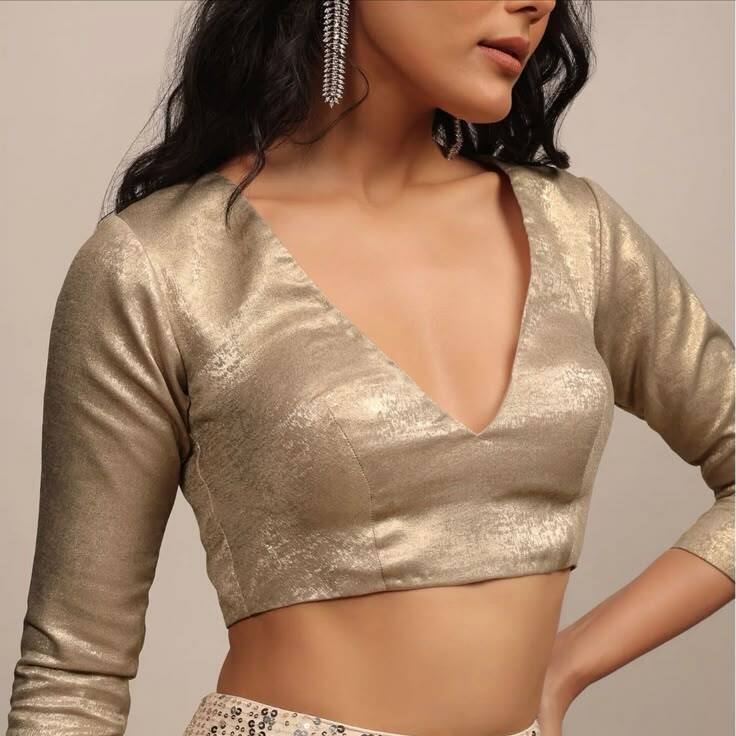
Fabrics Used in Sari Blouses
The choice of fabric plays a significant role in the style and comfort of an Indian blouse. Here are some commonly used fabrics:
Cotton
Cotton is a popular choice for everyday wear due to its comfort and breathability. These blouses are versatile, making them suitable for both casual and formal settings. They can be adorned with embroidery or print, enhancing their aesthetic appeal without compromising comfort.
Silk
Silk blouses exude elegance and luxury, making them a go-to choice for special occasions. The natural sheen of silk adds a regal touch to the outfit. Silk blouses often feature intricate designs, making them perfect for weddings, festivals, and other celebratory events.
Georgette
Georgette is a lightweight and flowy fabric that drapes beautifully on the body. Blouses made from georgette are popular for their soft texture and versatile uses. They pair well with various sarees and are especially favored for evening events due to their elegant and graceful appearance.
Velvet
Velvet is a luxurious fabric that adds richness to an outfit. These blouses are often worn during winter or formal occasions, providing warmth and style simultaneously. The plush nature of velvet lends itself well to intricate embroidery and designs.
Chiffon
Chiffon is a lightweight, sheer fabric that adds elegance to any outfit. These blouses are popular for their airy feel and flowing silhouette. They are perfect for layering over other garments and are ideal for warm-weather events.
Brocade
Brocade is a richly decorative fabric often used in festive wear. These blouses feature intricate patterns woven into the fabric, creating a striking visual effect. People typically wear these blouses during weddings and celebrations, adding opulence to the overall look.
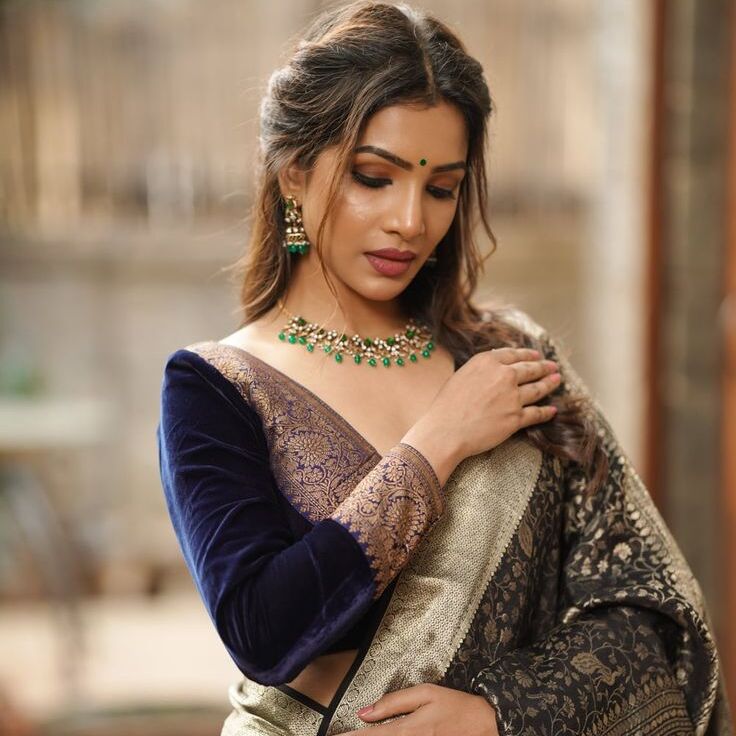
Aesthetic Elements of Indian Blouses
Indian blouses are not just garments; they are works of art, often featuring elaborate design elements. Here are some aesthetic elements that define Indian blouses:
Embroidery
Embroidery is a significant element that enhances the beauty of Indian blouses. Various techniques, such as Zardozi, Kantha, and Chikankari, are used to create intricate patterns and motifs. Embroidered blouses can transform a simple outfit into a statement piece.
Embellishments
Embellishments such as sequins, beads, and mirrors are commonly used to elevate the aesthetic appeal of Indian blouses. These decorative elements add sparkle and glamour, making the blouse suitable for festive occasions.
Prints and Patterns
Indian blouses often feature a range of prints and patterns, including floral, paisley, and geometric designs. The choice of print can reflect personal style and cultural heritage, contributing to the blouse’s uniqueness.
Necklines
The neckline of a blouse plays a crucial role in its overall aesthetic. Common styles include round, square, V-neck, and asymmetric designs. Each neckline offers a different vibe, allowing women to express their individuality through their outfit choices.
Sleeves
The sleeve design of a blouse can vary widely, from short and cap sleeves to long, flared, or bell sleeves. The length and style of the sleeves contribute significantly to the overall look and comfort of the blouse.
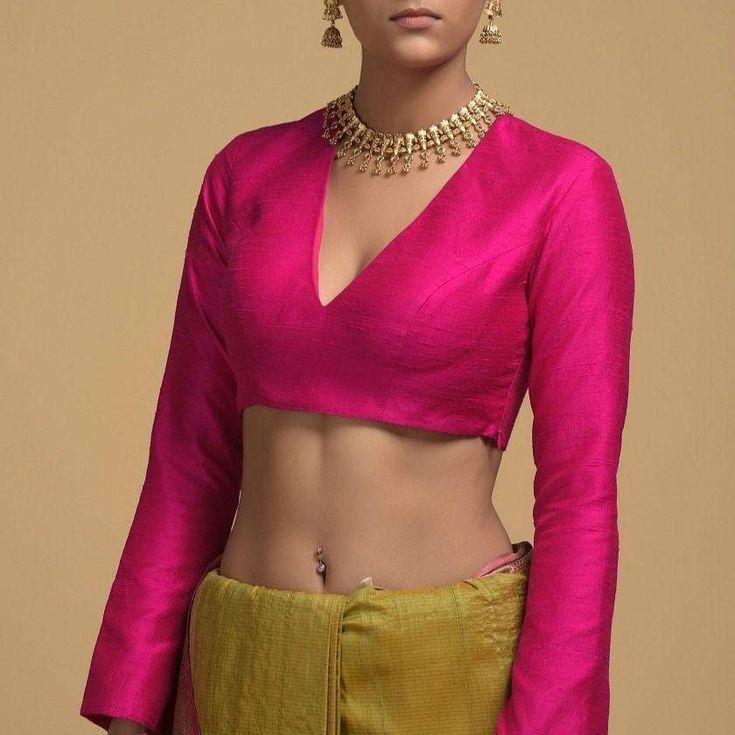
How to Style Sari Blouses
With their versatility, Indian blouses can be styled in various ways. Here are some tips on how to incorporate them into different outfits:
Pairing with Saris
The most common way to wear an Indian blouse is with a sari. When pairing a blouse with a sari, consider the fabric and color to create a harmonious look. For example, a bright-colored saree can be complemented with a contrasting blouse to make the outfit pop.
Combining with Lehengas
Indian blouses also pair beautifully with lehengas, creating a stunning and traditional ensemble. Opt for a designer blouse with intricate work to elevate the overall outfit. This combination is perfect for weddings and festivals.
Layering with Kurtis
For a modern twist, consider styling your blouse under a kurti or over a long jacket. This layered look provides a refreshing and contemporary approach to traditional attire.
Casual Wear
For a more casual look, pair a cotton blouse with jeans or palazzo pants. This creates a chic outfit for everyday outings while retaining traditional elements.
Accessorizing Thoughtfully
Accessorizing is key to completing an outfit featuring an Indian blouse. Pair it with statement jewelry, such as jhumkas (earrings) or necklaces, that complements the blouse design. Additionally, consider adding bangles or a clutch for added flair.
Occasions to Wear Indian Blouses
Indian blouses are suitable for a wide range of occasions. Here are some events where you can sport this beautiful garment:
Weddings
Weddings are one of the most common occasions to wear Indian blouses. Whether you are the bride, a bridesmaid, or a guest, embellished or designer blouses paired with sarees or lehengas will keep you stylish and elegant on this special day.
Festivals
During festivals like Diwali, Holi, and Navratri, wearing Indian blouses with colorful saris or lehengas enhances the celebratory spirit. Look for bright colors and festive prints to embrace the joyous atmosphere.
Parties and Gatherings
Indian blouses can be worn to parties and family gatherings, where traditional attire is often appreciated. Consider choosing trendy styles, such as off-the-shoulder or crop top blouses, for a modern look that stands out.
Cultural Events
Cultural events and performances provide an excellent opportunity to showcase Indian blouses. Whether you are participating in a dance or attending a cultural celebration, wearing a beautifully crafted blouse will connect you to your roots.
Everyday Wear
Don’t reserve Indian blouses for special occasions only. You can easily incorporate them into your everyday wardrobe by pairing simpler designs with skirts, trousers, or jeans for a casual, yet stylish look.

Caring for Sari Blouses
To maintain the beauty and integrity of your Indian blouses, proper care is essential. Here are some tips for caring for these garments:
Washing
Always check the care label before washing your blouse. Hand washing is recommended for delicate fabrics like silk or embroidered blouses to prevent damage. For cotton or polyester blends, gentle machine washing may be suitable.
Drying
Avoid wringing out your blouse, as this can distort its shape. Instead, lay it flat on a clean towel or hang it to dry away from direct sunlight to prevent fading.
Ironing
Iron your blouse on a low to medium heat setting, depending on the fabric. Always iron from the inside out to protect embellishments or prints. For silk and chiffon, using a steam iron can help remove wrinkles without damaging the fabric.
Storage
Store your Indian blouses in a cool, dry place. Use padded hangers to maintain their shape, or fold them neatly if you have limited space. Avoid overcrowding your wardrobe to prevent crushing delicate fabrics.
Conclusion
Indian blouses are more than just clothing; they represent a blend of tradition and modernity, comfort and style. Their rich history, diverse styles, and intricate craftsmanship make them an essential part of Indian fashion. Whether dressing for a wedding, festival, or casual outing, Indian blouses offer endless possibilities for personal expression.
Understanding the significance, styling options, and care guidelines for Indian blouses allows you to appreciate their beauty fully. As you explore the world of Indian fashion, let the diversity and elegance of Indian blouses inspire your wardrobe choices. With the right blouse, you can effortlessly embody the charm and grace of Indian culture, no matter the occasion.

